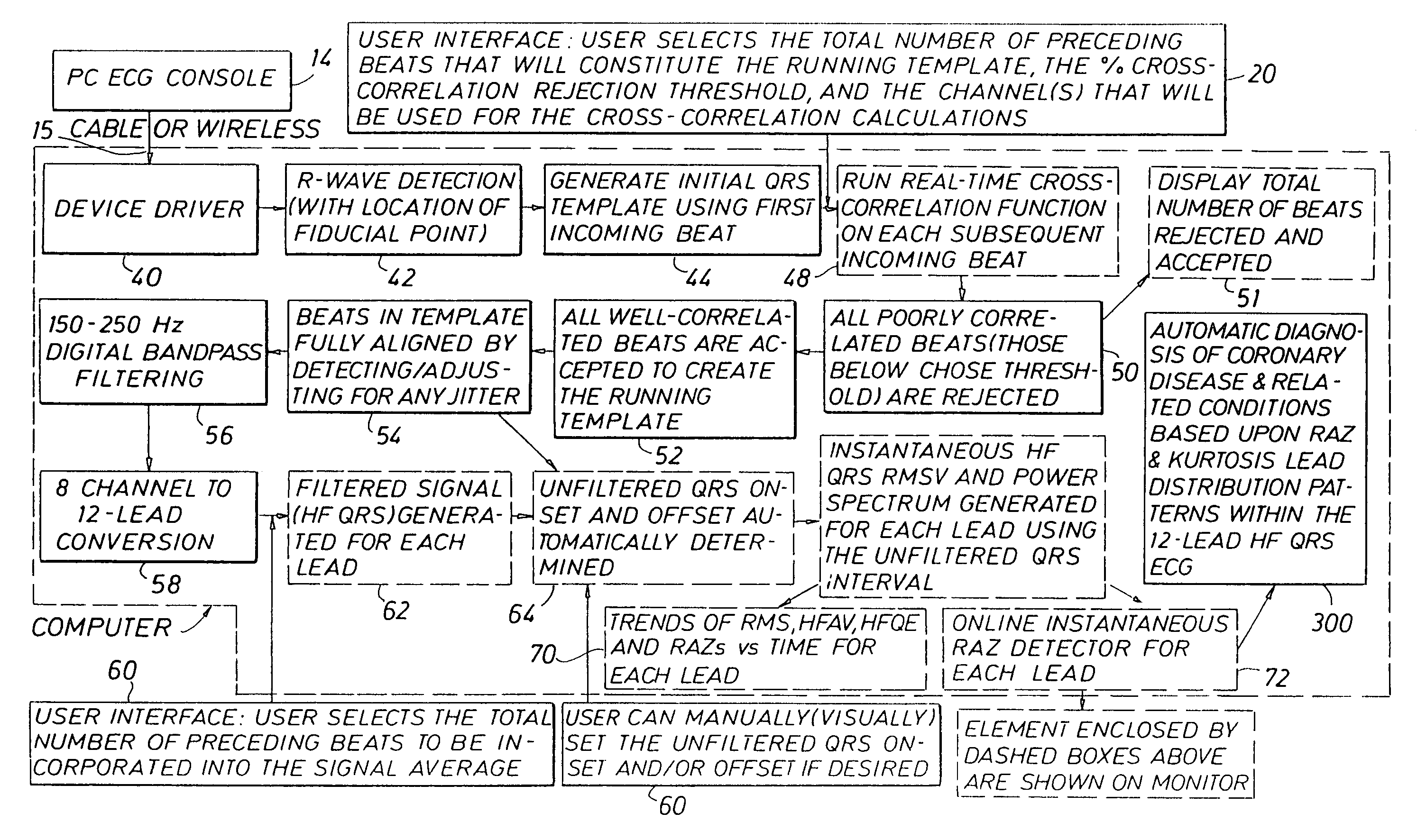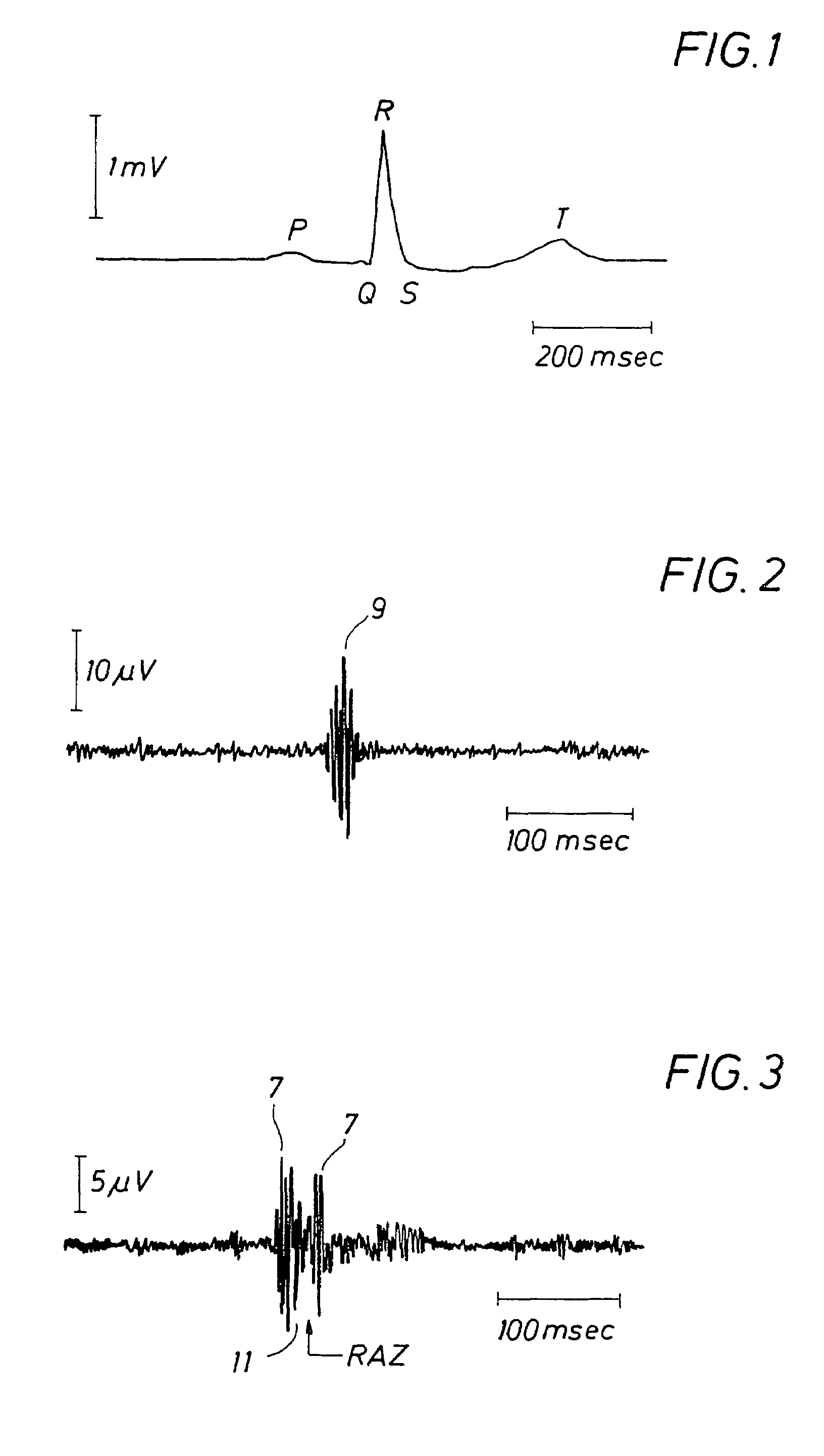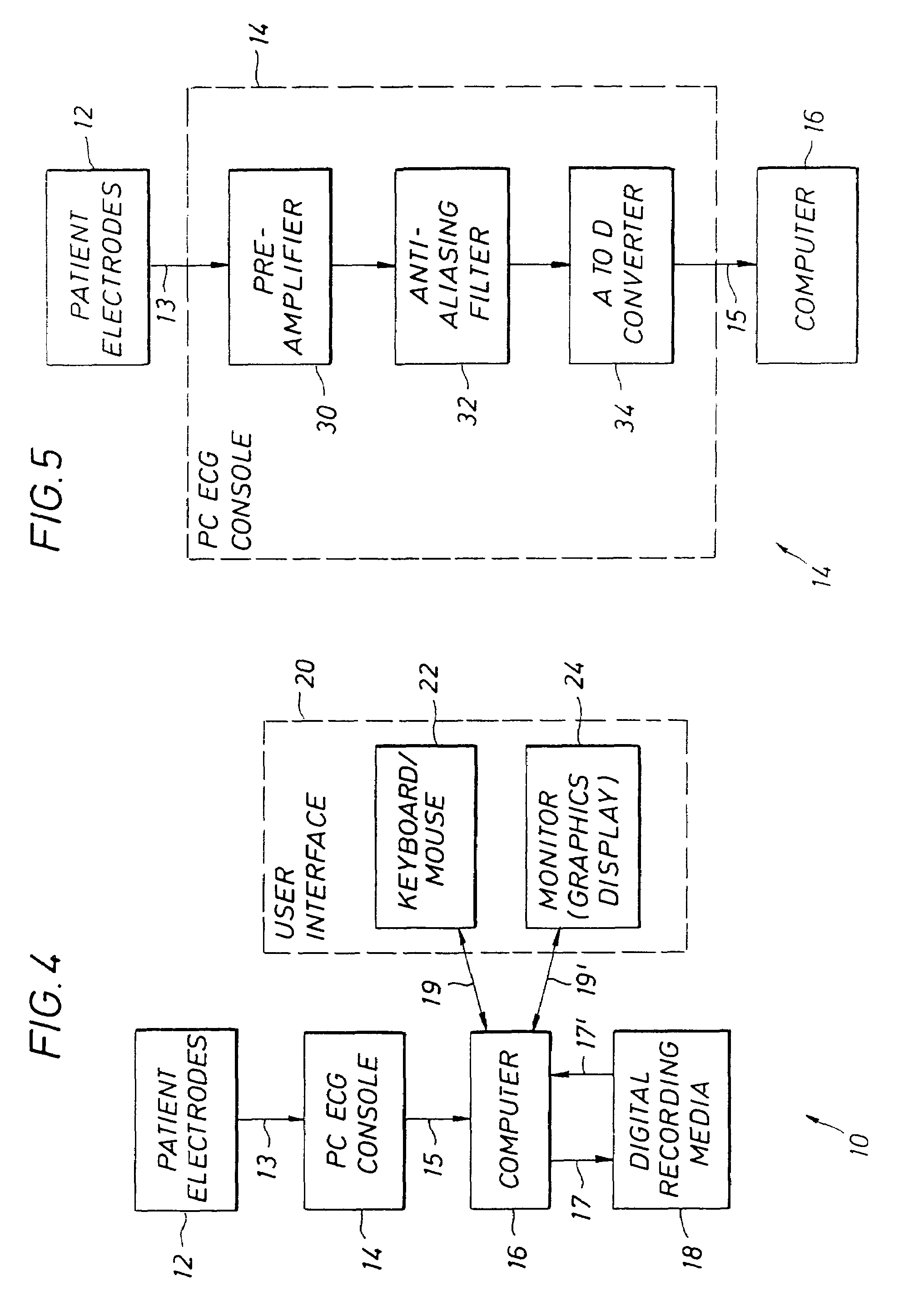System for the diagnosis and monitoring of coronary artery disease, acute coronary syndromes, cardiomyopathy and other cardiac conditions
a technology for monitoring and coronary arteries, applied in the field of electrocardiography, can solve the problems of no device capable of displaying, in real time, the changes of hf qrs components in the monitored patient, and the difficulty of identification of individuals with coronary artery disease (cad), acute coronary syndrome (acs), etc., to improve the overall sensitivity and specificity.
- Summary
- Abstract
- Description
- Claims
- Application Information
AI Technical Summary
Benefits of technology
Problems solved by technology
Method used
Image
Examples
Embodiment Construction
[0043]To summarize the present invention, in order to visualize HF QRS components of ECG signals, the following general steps are taken using the system of this invention: First, using PC-based ECG hardware and software, properly amplified ECG signals are acquired at sampling rates (preferably ≧1000 samples per second) that are higher than the sampling rates used in most traditional digital ECG devices (which are typically ≦250-500 samples / s). Next, the amplified incoming QRS complexes are signal-averaged in each receiving channel in order to improve the signal-to-noise ratio. Premature complexes and noisy beats are automatically eliminated (i.e., not added to the running template) by a cross correlation function that rejects any individual beat that is not adequately cross-correlated to the existing template(s). A cross correlation of at least 97% between the incoming beats in each channel and the templates in each channel is commonly defined as “adequate”, but this setting is user...
PUM
 Login to View More
Login to View More Abstract
Description
Claims
Application Information
 Login to View More
Login to View More - R&D
- Intellectual Property
- Life Sciences
- Materials
- Tech Scout
- Unparalleled Data Quality
- Higher Quality Content
- 60% Fewer Hallucinations
Browse by: Latest US Patents, China's latest patents, Technical Efficacy Thesaurus, Application Domain, Technology Topic, Popular Technical Reports.
© 2025 PatSnap. All rights reserved.Legal|Privacy policy|Modern Slavery Act Transparency Statement|Sitemap|About US| Contact US: help@patsnap.com



